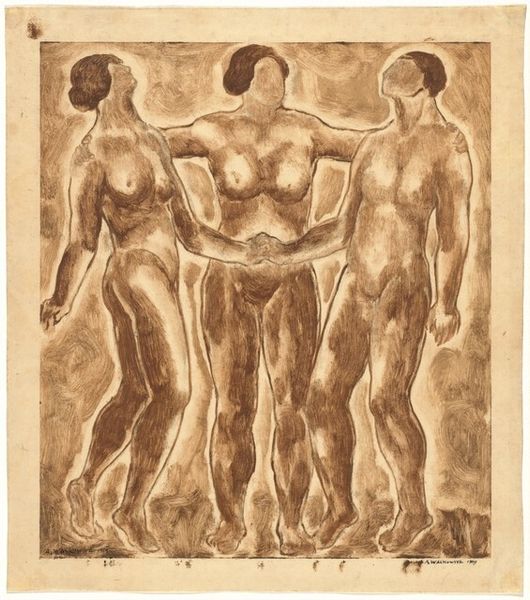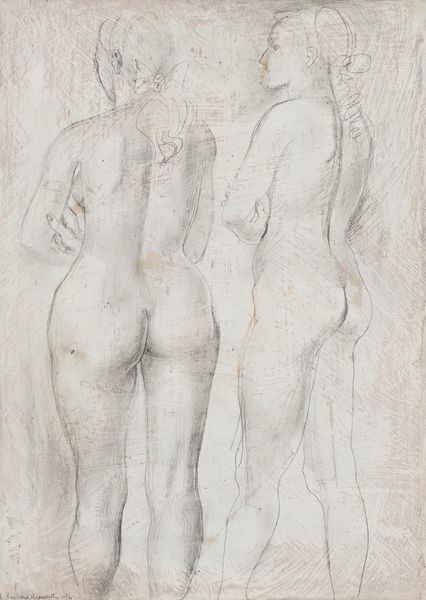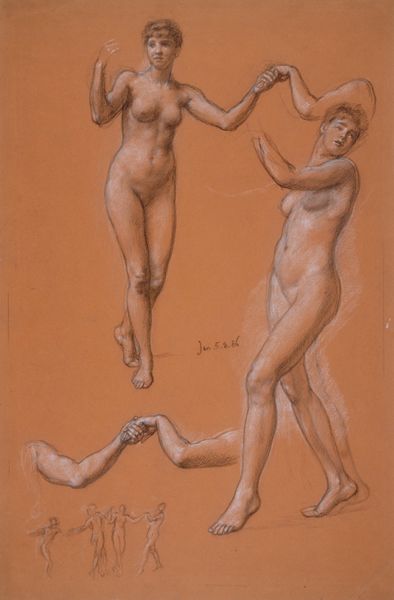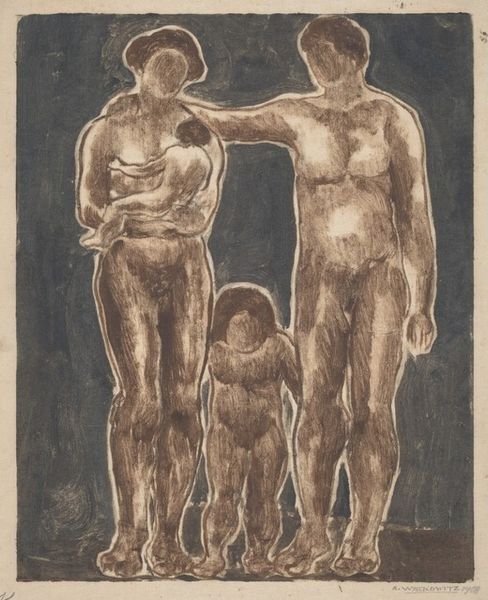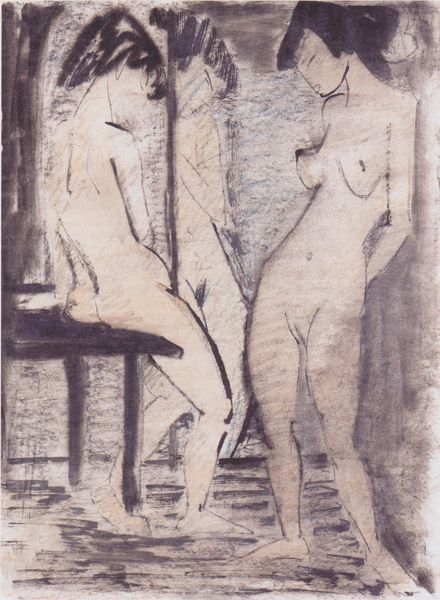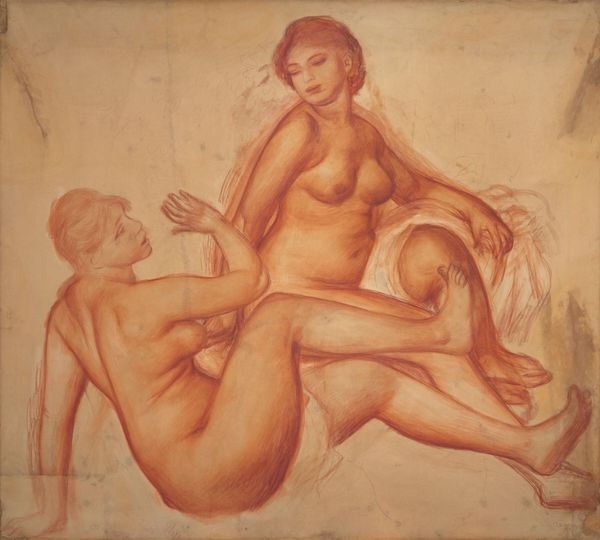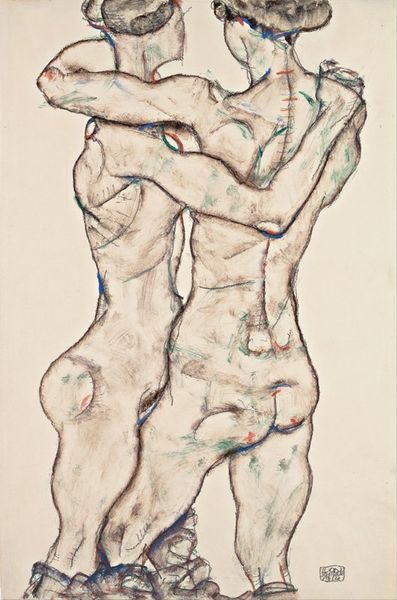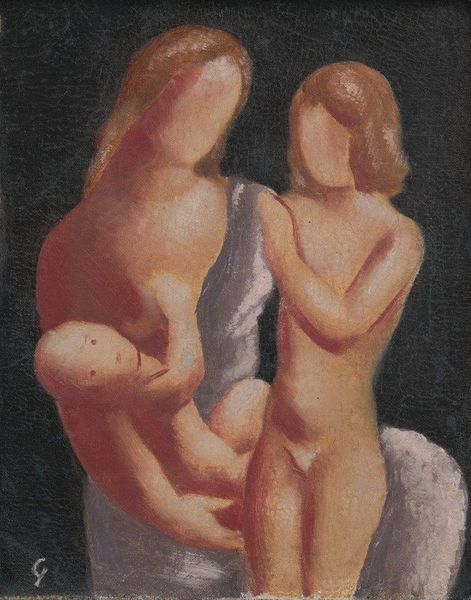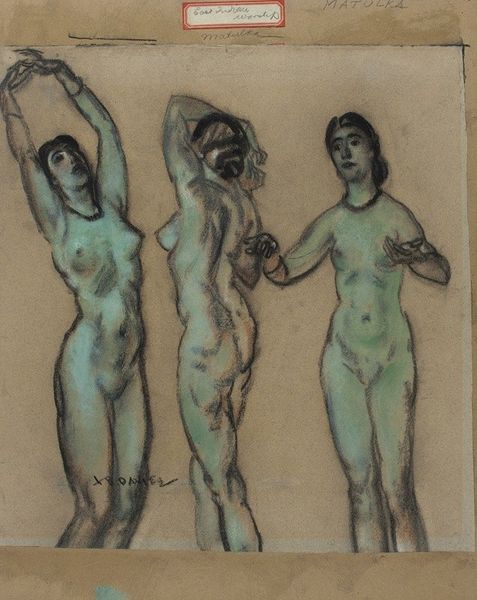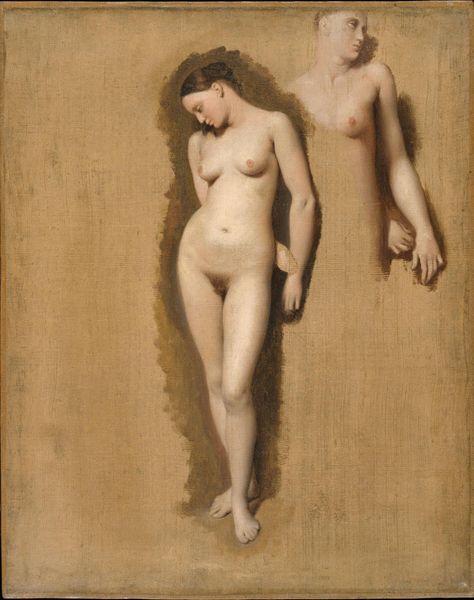
Copyright: Public domain
Editor: This is Edward Burne-Jones's drawing, *The Three Graces*, from 1885. It looks like a preliminary study in pencil. There's a melancholic, introspective feeling about it, despite the figures being nude. What significance do these figures hold? Curator: The Three Graces are figures derived from Greco-Roman mythology representing beauty, charm, and joy. Their nudity often symbolizes purity and natural beauty, stripping away artifice. Here, their interwoven embrace reinforces interconnectedness. Do you notice anything about their expressions? Editor: They all seem to be looking inward, or at each other, creating this sense of intimacy and contemplation, like they’re sharing some kind of secret, even grief? Curator: Exactly! The Pre-Raphaelites like Burne-Jones were interested in tapping into a world of allegory and symbol, often looking to the past, medieval or classical worlds, to find forms that could express present anxieties or ideals. What sort of continuity of imagery can we divine across time in relation to this subject? Editor: Well, "the Three Graces" have appeared as a theme over centuries in sculpture, painting, even photography. I suppose artists return to it, time and again, seeking a form for an idealized feminine, representing different facets of beauty but also community between women. It reminds us that throughout time, society has struggled to capture or present ideal beauty standards through archetypes and that myth lives in and among us still. Curator: And remember, symbols evolve with us. What beauty and community represent changes through time and across cultures; visual forms keep a pulse on memory and change. Thank you for unpacking some of these associations with me. Editor: Thank you for sharing this perspective with me! I'll never look at them the same way again!
Comments
No comments
Be the first to comment and join the conversation on the ultimate creative platform.
